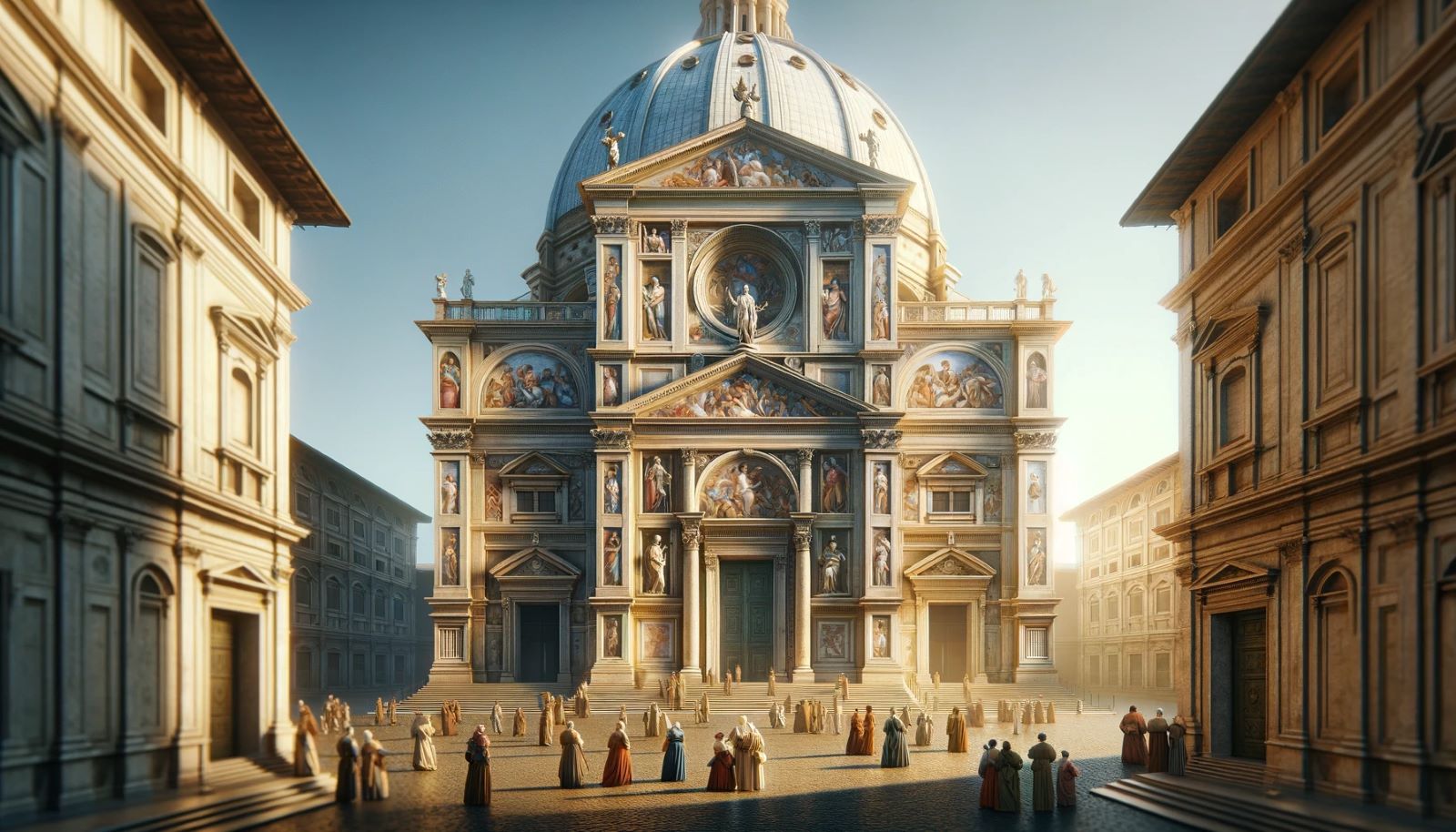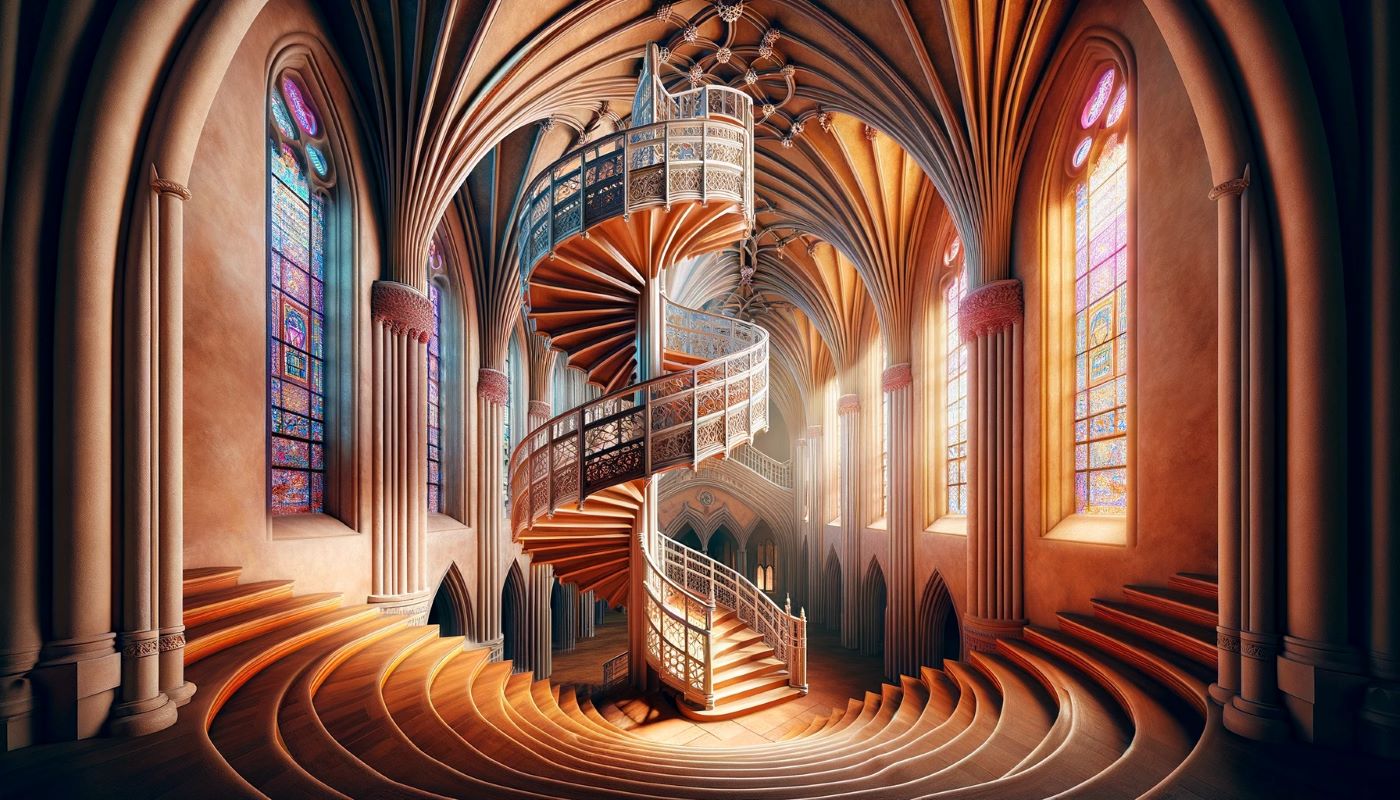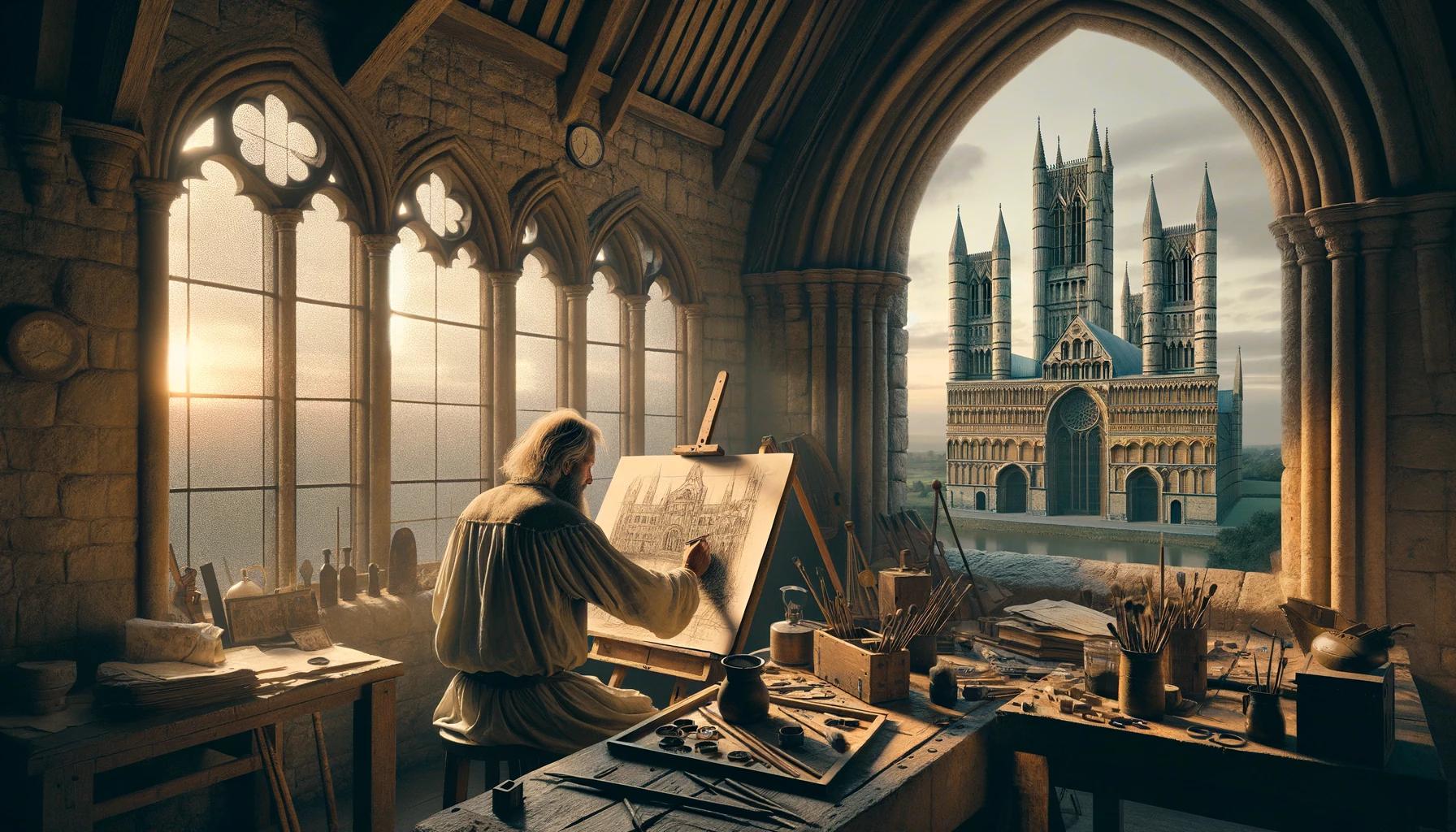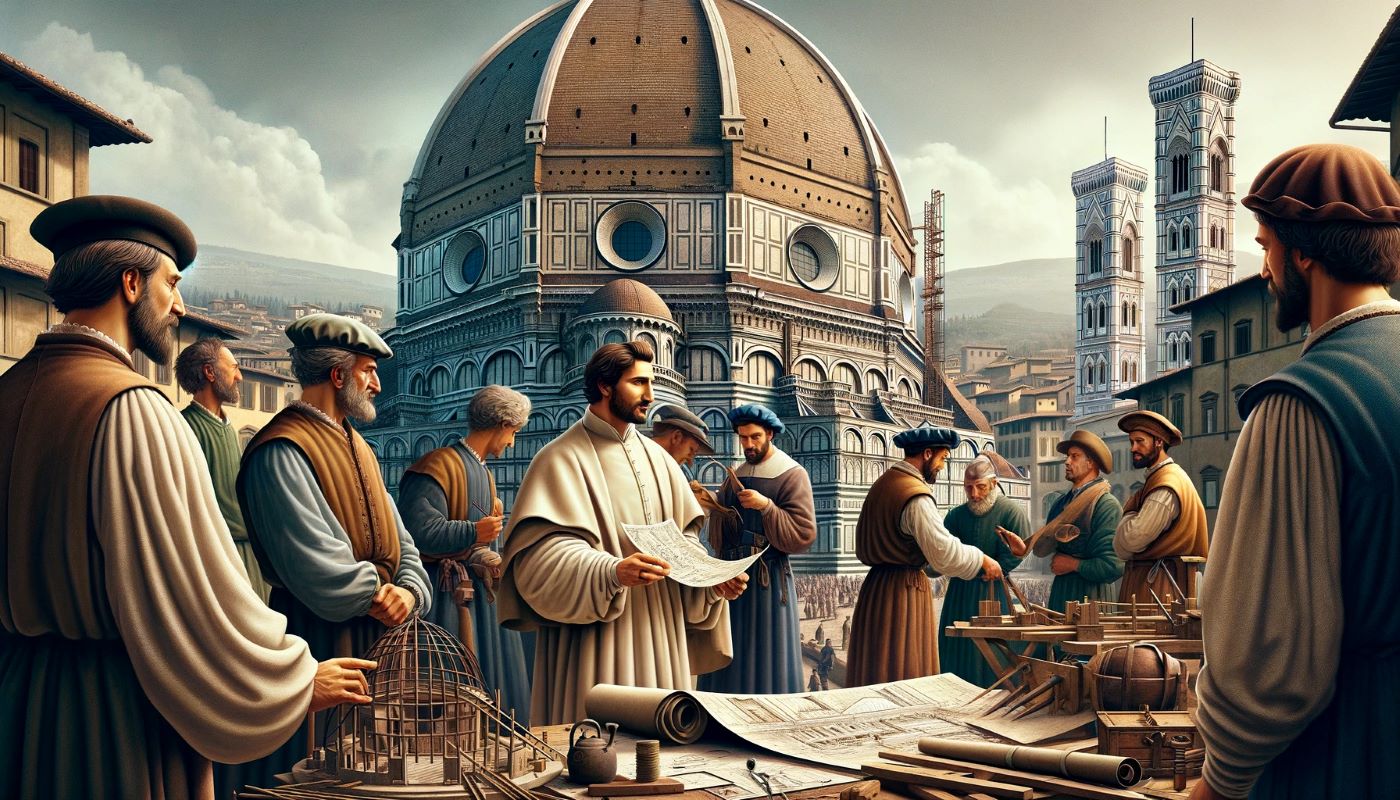Home>Arts and Culture>Who Built King’s College Chapel


Arts and Culture
Who Built King’s College Chapel
Published: March 4, 2024
Ericka Andersen, an editor at Christian.net, expertly merges digital strategy with content creation, focusing on faith and societal issues. Her communication skills enhance the platform's engaging narratives, fostering meaningful dialogue on belief's impact on society.
Discover the history and architecture of King's College Chapel, a masterpiece of arts and culture, and learn about the talented individuals who contributed to its construction. Explore the fascinating story behind the creation of this iconic landmark.
(Many of the links in this article redirect to a specific reviewed product. Your purchase of these products through affiliate links helps to generate commission for Christian.net, at no extra cost. Learn more)
Table of Contents
Introduction
Who built King's College Chapel? This question has intrigued historians, architects, and religious scholars for centuries. The construction of King's College Chapel is a remarkable feat of architectural and engineering prowess, and it holds significant historical and religious importance. In this article, we will delve into the history, design, construction, and the key figures involved in the creation of this iconic religious structure. By exploring the individuals and events that shaped the chapel's construction, we can gain a deeper understanding of the religious and cultural significance of King's College Chapel.
Read more: Who Is Buried In Kings Chapel, Boston
History of King's College Chapel
The history of King's College Chapel dates back to the 15th century when King Henry VI envisioned the establishment of a grand architectural masterpiece as part of King's College in Cambridge, England. The foundation stone was laid on July 25, 1446, marking the beginning of a project that would span over a century. The chapel's construction was not without its challenges, including interruptions caused by political unrest and financial constraints. Despite these obstacles, the vision for the chapel persisted, and it eventually emerged as a testament to the unwavering dedication of its creators.
The chapel's history is also intertwined with the tumultuous events of the English Reformation. During this period, the chapel faced the threat of destruction, yet it managed to survive, albeit with alterations to its religious practices and adornments. This resilience speaks to the enduring significance of King's College Chapel as a symbol of religious heritage and architectural achievement.
Over the centuries, the chapel has stood witness to numerous historical events, serving as a place of worship, commemoration, and cultural enrichment. Its history is a tapestry woven with threads of faith, creativity, and resilience, making it a cherished landmark not only for the university but for the broader community as well.
Architectural Design and Construction
The architectural design of King's College Chapel is a testament to the ingenuity and vision of its creators. The chapel is a prime example of late Gothic Perpendicular style, characterized by its soaring vertical lines, intricate tracery, and elaborate fan vaulting. The structure's symmetrical layout and expansive windows allow natural light to illuminate the interior, creating a sense of ethereal grandeur.
Construction of the chapel required meticulous planning and skilled craftsmanship. The use of locally sourced limestone and intricate stone carving techniques contributed to the chapel's enduring beauty. The intricate details of the chapel's exterior and interior, including the ornate pinnacles, delicate spires, and intricately carved wooden screens, showcase the dedication and artistry of the craftsmen involved in its construction.
The construction process itself was a monumental undertaking, spanning several decades and involving a multitude of skilled workers. The logistics of transporting materials, coordinating labor, and adhering to the architectural vision presented significant challenges. Despite these obstacles, the unwavering commitment to realizing King Henry VI's vision ultimately led to the creation of one of the most magnificent religious structures in England.
The architectural design and construction of King's College Chapel stand as a testament to the intersection of faith, artistry, and engineering. Its enduring presence serves as a reminder of the human capacity to create awe-inspiring monuments that transcend time and inspire reverence.
The Master Masons
The construction of King's College Chapel was overseen by a succession of master masons, each contributing their expertise and vision to the realization of this architectural marvel. The initial master mason, Reginald Ely, laid the groundwork for the chapel's construction, establishing the foundational elements of its design and structural integrity. His successor, John Wastell, is credited with bringing a heightened level of artistry and innovation to the project, particularly in the intricate fan vaulting that adorns the chapel's ceiling. Wastell's mastery of architectural design and his ability to translate complex geometric patterns into tangible stone structures elevated the chapel to new heights of grandeur.
Following Wastell, the role of master mason was assumed by William Vertue, who continued the legacy of excellence set forth by his predecessors. Vertue's contributions to the chapel's construction further solidified its status as a pinnacle of Gothic architecture, and his meticulous attention to detail is evident in the ornate tracery and delicate stonework that adorn the chapel's interior and exterior.
The succession of master masons who guided the construction of King's College Chapel exemplifies the collaborative and iterative nature of architectural innovation. Each master mason built upon the achievements of those who came before, adding their own unique flair and technical expertise to the ongoing legacy of the chapel's construction. The collective mastery of these individuals culminated in the creation of a structure that continues to inspire awe and reverence to this day.
The contributions of the master masons extend beyond their technical skills; they represent a lineage of artistic visionaries who dedicated themselves to the pursuit of architectural excellence. Their enduring legacy is etched into the very fabric of King's College Chapel, serving as a testament to the power of human creativity and the enduring impact of collaborative craftsmanship.
The Craftsmen and Workers
The construction of King's College Chapel relied on the expertise and dedication of a diverse array of craftsmen and workers. From stonemasons and carpenters to glaziers and laborers, each individual played a crucial role in bringing the architectural vision to life. The stonemasons, in particular, demonstrated exceptional skill in shaping and carving the intricate details that adorn the chapel's exterior and interior. Their mastery of stonecraft is evident in the delicate tracery, ornate pinnacles, and meticulously carved sculptures that embellish the structure.
The carpenters and woodworkers also made significant contributions, crafting the intricate wooden screens, roof structures, and decorative elements that complemented the stone architecture. Their precision and artistry added a layer of warmth and richness to the chapel's interior, creating a harmonious blend of stone and wood craftsmanship. Additionally, the glaziers showcased their expertise in the creation of the chapel's stained glass windows, which served as vibrant canvases that illuminated the sacred space with a kaleidoscope of colors and religious imagery.
Beyond the specialized trades, the laborers and workers who toiled tirelessly on the construction site played an indispensable role in realizing the architectural masterpiece. Their collective efforts in transporting materials, erecting scaffolding, and executing the day-to-day tasks of construction were essential to the chapel's completion. Their dedication and perseverance, often in the face of challenging working conditions, underscore the collaborative spirit that permeated the construction process.
The craftsmen and workers of King's College Chapel represent a testament to the collective ingenuity and labor that went into creating this enduring symbol of faith and artistry. Their individual contributions, when woven together, form the intricate tapestry of skill and dedication that defines the chapel's construction. Their legacy lives on in the intricate details and structural integrity of King's College Chapel, serving as a reminder of the profound impact of human craftsmanship on the built environment.
Read more: Why Was The White Chapel In Egypt Built
The Role of King Henry VI
King Henry VI played a pivotal role in the conception and realization of King's College Chapel. His vision for the chapel stemmed from a deep commitment to education, religion, and architectural grandeur. As the founder of King's College, Henry VI sought to establish a place of worship and learning that would stand as a testament to his devotion to both faith and academia. The chapel, with its imposing presence and intricate design, was intended to serve as a focal point for spiritual contemplation and intellectual enlightenment within the university.
Henry VI's influence extended beyond mere patronage; he actively participated in the planning and execution of the chapel's construction. His royal authority and financial support were instrumental in overcoming the various challenges that arose during the building process. Despite facing political turmoil and financial constraints, Henry VI remained steadfast in his commitment to seeing the chapel through to completion. His unwavering dedication to the project ensured that the chapel would become a lasting legacy of his reign and a symbol of piety and cultural refinement.
The chapel's construction also reflected Henry VI's aspiration to create a place of worship that would inspire reverence and awe. The grandeur of the chapel's architectural design and the meticulous attention to detail were a reflection of the king's desire to create a space that would elevate the spiritual experience of its visitors. The chapel's soaring vaults, intricate tracery, and expansive windows were all manifestations of Henry VI's vision to create a sanctuary that would uplift the soul and inspire devotion.
In addition to his role as a patron and visionary, Henry VI's personal involvement in the chapel's religious life further underscored his commitment to its significance. He actively participated in the ceremonial aspects of the chapel, attending religious services and contributing to its endowment. His personal investment in the spiritual life of the chapel reinforced its status as a place of profound religious and cultural importance.
King Henry VI's enduring legacy is intricately woven into the fabric of King's College Chapel. His vision, patronage, and unwavering commitment to the chapel's construction have left an indelible mark on its history and significance. The chapel stands as a testament to his enduring influence and serves as a living embodiment of his dedication to the pursuit of knowledge, faith, and architectural splendor.
Significance of King's College Chapel
-
Spiritual Haven: King's College Chapel stands as a spiritual haven, offering a place of solace and reflection for visitors from all walks of life. Its awe-inspiring architecture and serene ambiance create an atmosphere conducive to contemplation and prayer, serving as a timeless sanctuary for spiritual nourishment.
-
Cultural Heritage: The chapel represents a rich tapestry of cultural heritage, embodying the artistic, architectural, and religious traditions of its time. Its enduring presence serves as a living testament to the creativity and craftsmanship of generations past, offering a glimpse into the cultural legacy that continues to inspire and captivate.
-
Architectural Marvel: As a pinnacle of Gothic architecture, King's College Chapel stands as a testament to human ingenuity and the pursuit of architectural excellence. Its soaring vaults, intricate tracery, and majestic presence showcase the heights of medieval craftsmanship, leaving an indelible mark on the architectural landscape.
-
Educational Legacy: Rooted within the esteemed grounds of King's College, the chapel serves as a symbol of educational legacy and intellectual pursuit. It stands as a reminder of the enduring connection between faith and learning, inspiring generations of scholars and students to seek knowledge and enlightenment within its hallowed halls.
-
Historical Symbolism: The chapel's rich history and enduring resilience during periods of political and religious upheaval make it a symbol of historical significance. It bears witness to the passage of time and the enduring spirit of resilience, offering a tangible link to the events and individuals that have shaped its narrative.
-
Community Gathering Place: Beyond its religious significance, King's College Chapel serves as a gathering place for the community, hosting a myriad of events, concerts, and ceremonies that enrich the cultural fabric of the region. Its role as a communal space fosters a sense of unity and shared experience, transcending religious boundaries.
-
Global Landmark: With its international renown and status as a global landmark, King's College Chapel attracts visitors from around the world, serving as a bridge between cultures and a testament to the universal appeal of architectural and spiritual grandeur.
-
Symbol of Endurance: The chapel's enduring presence, despite the passage of centuries and the challenges it has weathered, serves as a symbol of endurance and perseverance. It stands as a reminder of the human capacity to create lasting legacies that transcend the limitations of time and circumstance.
-
Inspiration and Reverence: King's College Chapel continues to inspire awe and reverence, captivating the hearts and minds of all who encounter its majestic beauty. Its significance lies not only in its physical form but in the profound emotional and spiritual impact it imparts on those who experience its grandeur.
-
Legacy of Faith and Artistry: Above all, King's College Chapel embodies a legacy of faith and artistry, weaving together the spiritual devotion of its creators with the unparalleled skill and creativity of the craftsmen who brought its vision to life. It stands as a testament to the enduring power of faith, art, and human endeavor, leaving an indelible mark on the hearts of all who behold it.














